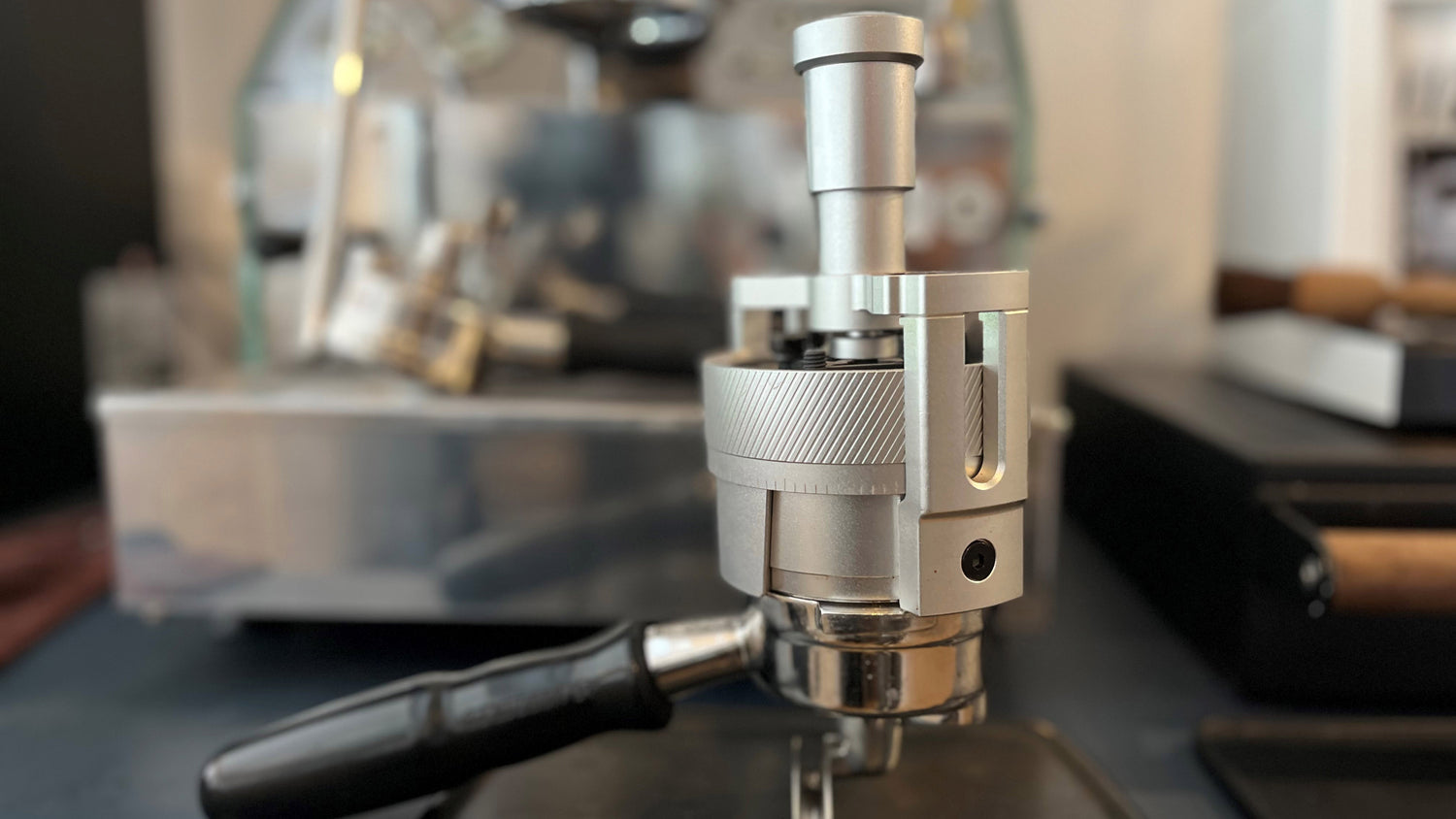What is the Weiss Distribution Technique?
The Weiss Distribution Technique , or WDT for short, is a method for evenly distributing the ground coffee in the portafilter before it is tamped or otherwise compressed . With WDT, the ground coffee is carefully loosened and distributed with fine needles or wires to break up smaller lumps and give the final coffee puck a very homogeneous structure. This ultimately leads to a consistent extraction.
Who invented the WDT?
The technique dates back to John Weiss, a US coffee enthusiast who documented it in the Home Barista forum back in 2005. Since then, it has become established in the espresso community worldwide and has continued to evolve. The WDT tools, i.e., the tools used to perform Weiss Distribution, range from improvised paper clips to precision-manufactured branded products with planetary gears.
What makes the WDT so special?

Espresso grinders—especially those used at home—often produce small lumps in the ground coffee, especially with darker roasts or low humidity. These lumps, if not broken down, create areas in the compressed coffee puck that are more tightly bonded than the surrounding grounds. This then leads to uneven extraction: Some areas of the puck receive more water, others less.
The WDT ensures:
- Homogeneous distribution of the coffee grounds
- Airy, lump-free structure
- Avoiding channeling
- Improved reproducibility
Imagine …
Imagine baking a cake and simply adding flour, sugar, and cocoa powder to the bowl without sifting or mixing. Lumps will form, and the final result will be uneven: sometimes too sweet, sometimes too dry, perhaps even with small pockets of flour. The same thing happens with espresso if the ground coffee is unevenly distributed.
The Weiss Distribution Technique is to your espresso what careful sieving and blending of dry ingredients is to baking. It ensures that everything is evenly distributed in the portafilter, the moisture is distributed evenly throughout, and the result is rounded and homogenous in flavor.
What are the advantages of WDT?
- Better extraction : The even distribution leads to better water flow
- More flavor : Less channeling means more consistent flavor yield
- More stable shots : This is especially important for lighter roasts or single dosing
- Visually more attractive pucks : Clean, even coffee cake
What tools are available for WDT?
The spectrum ranges from DIY versions to specialized tools with complex gears. Common options include:
- WDT tools with needles : Thin, elastic needles (e.g. B. made of stainless steel or titanium) in holders made of wood or plastic
- 3D-printed tools : Customizable, often very affordable
- Premium tools : High-quality models with ergonomic handles, precisely aligned needles and, for example, planetary gears
Whether bought or homemade, it is important that the needles are thin enough (ideally less than 0.4 mm) to loosen the coffee grounds without compacting them too much.
What to do without a dedicated WDT tool?
You don't need an expensive precision tool to get started. Many coffee lovers build their first WDT tool themselves – for example, from a wine cork and fine sewing needles, dental instruments, or anti-static combs. It's important that the needles are thin enough (about 0.3 to 0.4 mm). mm would be optimal) and remain stable. Those looking for a little more comfort can also find inexpensive entry-level sets with ergonomic handles online.
Here are a few ways to build such a WDT tool yourself
- Bend the paper clip
- Insert sewing needle into wine cork
- Dental scaler or toothpick (rather suboptimal due to thickness)
Important: Cleanliness and a fine tip – otherwise you will compact the coffee grounds rather than loosen them.

Common mistakes when using WDT
Beginners, in particular, sometimes make mistakes when distributing the coffee grounds with the WDT, which can diminish the effect. A common mistake is pushing the needles too deeply into the grounds – this can result in the coffee being distributed unevenly or compacted too much. Equally problematic is overly hectic or circular stirring, which tends to disturb the coffee bed rather than loosen it evenly. A smooth, even movement is important – ideally distributed over the entire surface.
With or without WDT: The difference in comparison
The effect of WDT is often immediately noticeable – especially with espresso. Without even distribution, small air pockets or lumps form in the coffee bed, which lead to so-called "channels" during extraction: The water seeks the path of least resistance, which can lead to under-extraction and a thin flavor. With WDT, however, the coffee grounds are evenly distributed and loosened, allowing the water to reach and extract every part of your grounds evenly – the result: more sweetness, balance, and better body in the cup.
Conclusion
With WDT, every cup of espresso tastes more balanced and better. You'll avoid channeling even more effectively and avoid the risk of under-extraction. It's best to try it out – a few espressos without WDT and a few with, and then decide whether you want to work with or without the Weiss Distribution Technique in the future. Whether you buy a WDT tool right away or raid your sewing supplies and grab a wine cork is entirely up to you. (You can find plenty of instructions on YouTube for building a WDT tool.) The tools are available in all price ranges.




